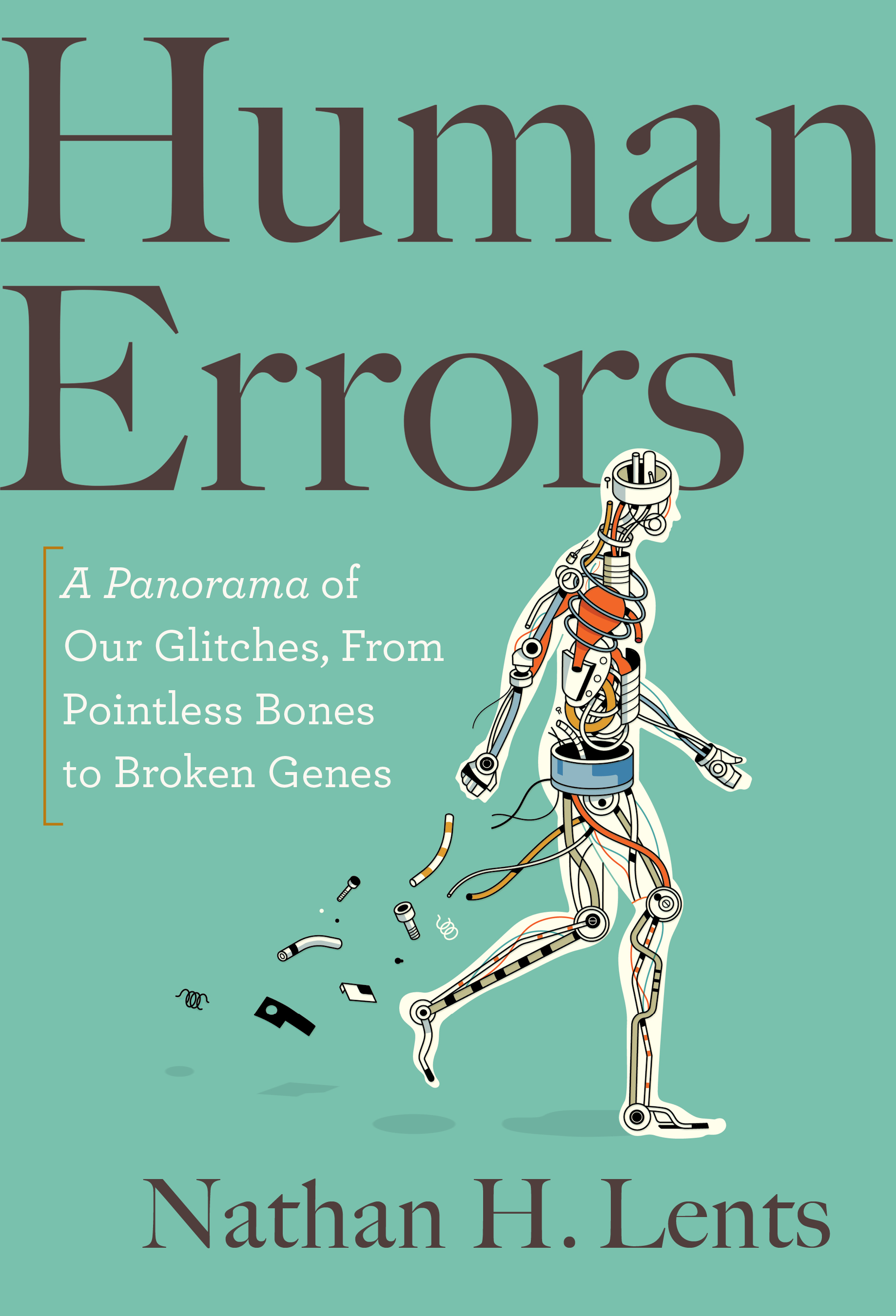The slap-dash nature of evolution makes entertaining reading
Nathan Lents' new book details the accidental, incidental nature of human quirks
Photo by Shane Rounce on Unsplash
If you've ever accidentally inhaled a bite of food, blown out a knee, or been called "four-eyes" for wearing glasses on the playground, you're already intimately familiar with the premise of human biologist Nathan H. Lents' new book, Human Errors, which came out earlier this month. Lents catalogs the panoply of problems that evolution has created within the human body, from the level of our DNA up to our very thought processes.
To paraphrase the author: if you're looking for a story about the miracle that is the human body, this isn't it. Human Errors is an exploration of the process of evolution by natural selection using our own flawed bodies, brains, and genes as the examples. As a collection of stories that fans of popular science writing will connect to and appreciate (having likely experienced the issues Lents describes for themselves), it succeeds, and I found it to be a generally engaging read that places our foibles within a larger evolutionary context.

Houghton Mifflin Harcourt
Lents begins his tour of our flaws with our skeleton (originally adapted for four-legged life in the trees, forced to make it work on two legs on the ground), works through diet (drink your orange juice or die of scurvy!), the human genome (basically a trashcan for viral DNA), the absurdity of our reproductive system (sperm can't turn left), and developmental defects and autoimmune disorders (cell division is the biological equivalent of playing whack-a-mole with a self-destruct button). He finishes with why our brains are illogical, and how they have simultaneously created the worst existential risks we currently face and might save us from them. Human Errors covers a lot of biological ground at a relatively rapid pace; each example is presented without jargon and discussed clearly, and the structure of the book makes it easy to read and digest in bite-sized chunks.
As an anthropologist who studies the pelvis (a distinctly ridiculous part of the skeleton, having been highly modified for both upright walking and giving birth to big-headed babies - goals that were often described by past researchers as being at odds with each other), I appreciated Lents' description of the human body as the culmination of a series of evolutionary compromises, made to maximize short-term gains. Lents plays variations on this theme throughout the book, with our flaws being being attributed to incomplete adaptation, mismatches between the evolutionary environment and our current lifestyle, or the limitations of evolution itself.
In terms of the breadth of his examples, Lents does a great job of illustrating how the process of natural selection has worked over and over again in different steps and increments on all of our systems. But sometimes this breadth in Lents' examples comes at the expense of explaining them in depth. This was especially prevalent in the chapters on developmental defects and the reproductive system - he pointed to our faulty mechanisms – like the fact that the fallopian tubes are not directly hooked into to their respective ovaries – for example. But he didn't explain what evolutionary pathways led us to things like having around 25,000 babies born in the United States each year with an actual hole (called a septal defect) between two of the chambers of their hearts, beyond saying that "the genes for the genesis of the heart are a little rusty." While the exact causes of septal defects aren't always clear, some of the underlying genetics are known, and a more general explanation of how these kinds of genetic developmental defects can persist would have made the book more complete.
Another recurring theme is how often humans use scientific and technological innovations to get around our evolutionary flaws (and, perhaps inadvertently, to create new ones). For example, while the marvels of modern medicine have allowed us to decrease infant and childhood mortality (life stages that were fraught with risk in the past), these advances also contribute to the massive boom in population that we've experienced, causing global hunger to become a major concern. More children surviving childhood also means that classic pressures of natural selection (like childhood diseases) have been mitigated, leading Lents into part of his epilogue about whether or not our species is still evolving. Spoiler alert: there's more than one force that drives evolution, so yes, we still are.
Overall, Human Errors was an enjoyable read (ironic, considering its focus on our faults). Lents' tone and style are conversational, and his examples are relatable. His discussion of evolution by natural selection as ultimately about propagating whatever trait worked best for our ancestors at a particular historical moment (rather than being oriented toward a goal) is sound.
While Lents says that his intent was not to write another book about the perfection of the human form, perhaps the real miracle is that such a cobbled together primate managed to take over the world in as thorough a fashion as we have.